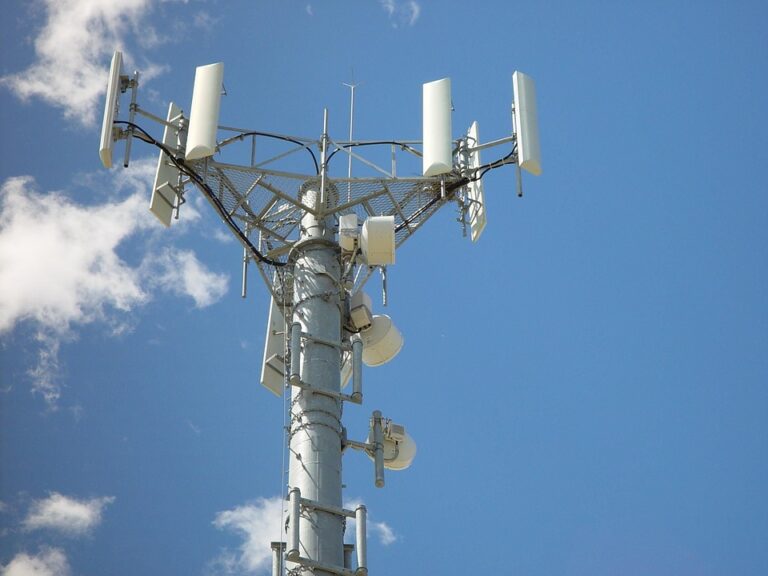Are usually safest distance coming from a 5G cell Tower system?

If you've ever been through a city, you may have seen tiny cell towers for 5G on the poles of street lights. They appear like tiny boxes, but they're actually broadcasting wireless signals from cell phone providers to your phone.
They are replacing larger built cell towers. While they're less noticeable but they can still create problems for those who live nearby.
A of the FCC's Radiation Exposure Thresholds
The FCC's Radiation Exposure Thresholds establish the maximum amount of time one can expose to electromagnetic energy from wireless devices. The limits for exposure are based upon scientific research which show that the energy of RF can cause harm to health.
The specific absorption rate (SAR) is an indicator of the amount of radiofrequency energy taken up by tissues. It is typically 1.6 watts per kilogram, spread over a gram of tissue.
But, since 5g operates at higher frequencies, it has the potential to cause greater energy intensity on the skin and other directly-exposed body areas. This could lead to many potential harms, including exacerbated appearance of skin disorders like dermatitis, skin cancer and cataracts.
Due to the potential for harmful effects of radiation from 5G, PSU has chosen to create a general power density limit of 4 mW/cm2 measured over 1 cm2, and not to exceed 30 minutes, for all 5G services running at 3000 GHz. This localized limit is consistent with the maximum spatial-average SAR of 1.6 W/kg averaged over 1 5 grams of body tissue, at 6 GHz.
The FCC's Maximum Exposure Thresholds for Maximum Exposure
In the event that you've used cell phone, you're probably aware that a safe distance from the tower should be at least 400 meters. This is because the transmitting power of a cell tower increases dramatically the further away your location from the tower.

Although this may sound like a good idea however, people who live close to towers might be more prone to health issues. For https://canvas.instructure.com/eportfolios/2062694/Home/How_Far_Away_from_a_5G_Mobile_Structure_Is_Safe , a study conducted in 2014 in India discovered that people who lived within 50m of cell towers experienced much more health problems than those living further distance from them.
But, the study revealed that those who relocated into areas farther away from cell towers experienced their symptoms improve within a few days. Other studies have demonstrated that exposure to extreme levels of radiofrequency electromagnetic fields (EMFs) can lead to cancer, brain tumors, and other health problems.
This is due to the fact that the RF radiation used in wireless communication, can penetrate the human body's exterior layer, which is the skin. This is important to understand because the skin serves as a protective barrier against injury to the body, infection caused by pathogenic microorganisms and infiltration of toxic substances. Additionally, it is the biggest organ of the human body and is accountable for maintaining the integrity of other organs.
what is a safe distance from a cell tower on numerous assumptions that are not supported by scientific research. This includes the false assumption that short-term exposures to RF radiation is safe because of the minimal penetration into the body (i.e., tissue heating).
The assumption also ignores the deeper penetration of the ELF elements of modulated radio signals and the effect on the body of short bursts from pulsed RF waves. These assumptions do not correspond with current understanding of the biological effects of RF radiation. Therefore they shouldn't be used for health protective exposure standards.
In addition to that, ICNIRP and FCC limit its maximum levels of radiation exposure for local peak SARs based on the maximum frequency of absorption (psSAR), which can be described as an inadequate dosimetric tool to assess the amount of exposure to radiofrequency radiation. In what is a safe distance from a 5g cell tower is inconclusive when frequencies exceed 6 GHz. In addition, psSAR is not been evaluated for RF radiation that is exposed to other environmental agents , such like sunlight. Interactions of RF radiation and other agents in the environment could result in antagonistic or synergistic impacts. This would result in the risk of having adverse health adverse effects. For example, co-exposure to RF radiation along with exposure to sunlight can cause an increase in the incidence of skin cancer and exacerbate other skin disorders, such as acne.
